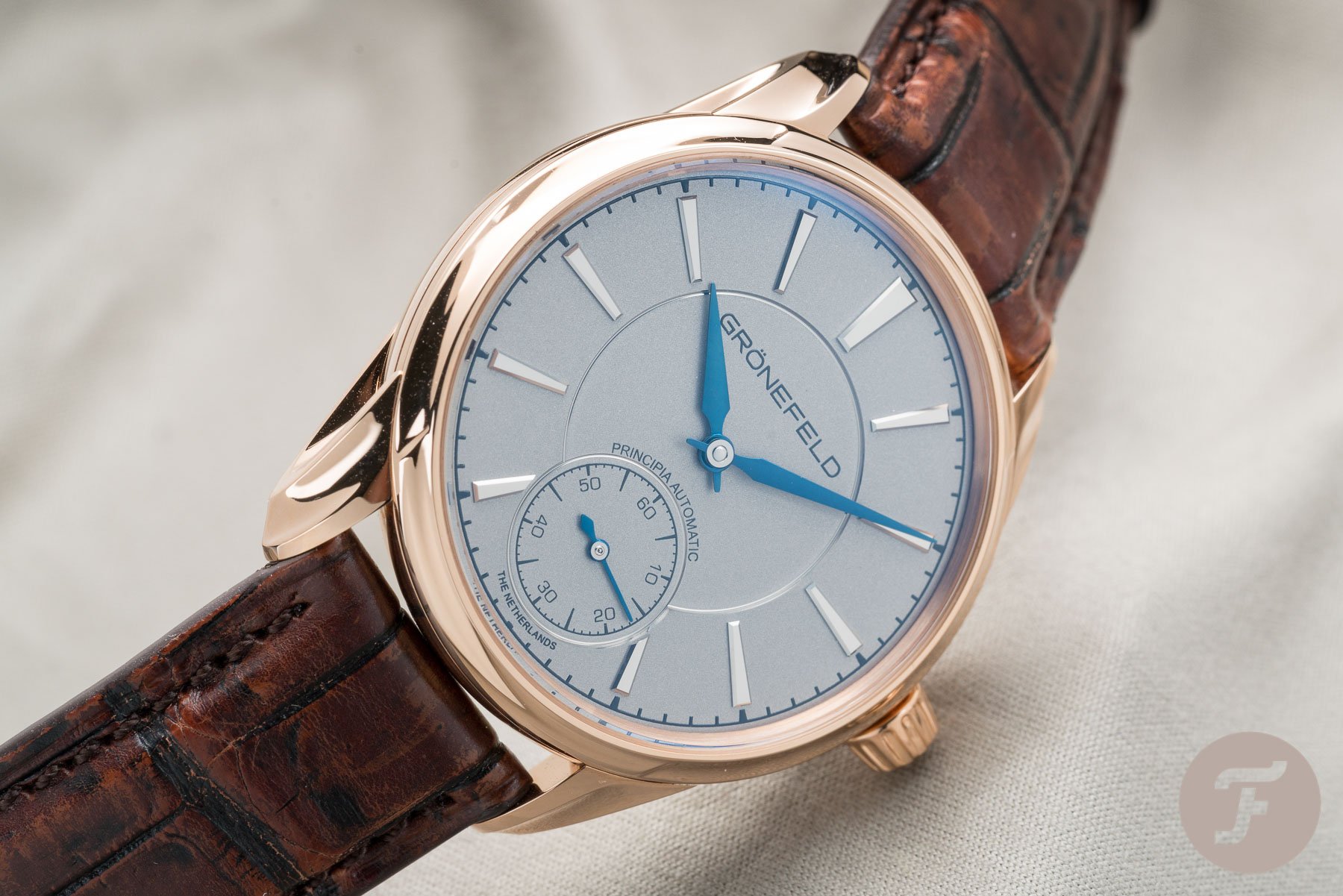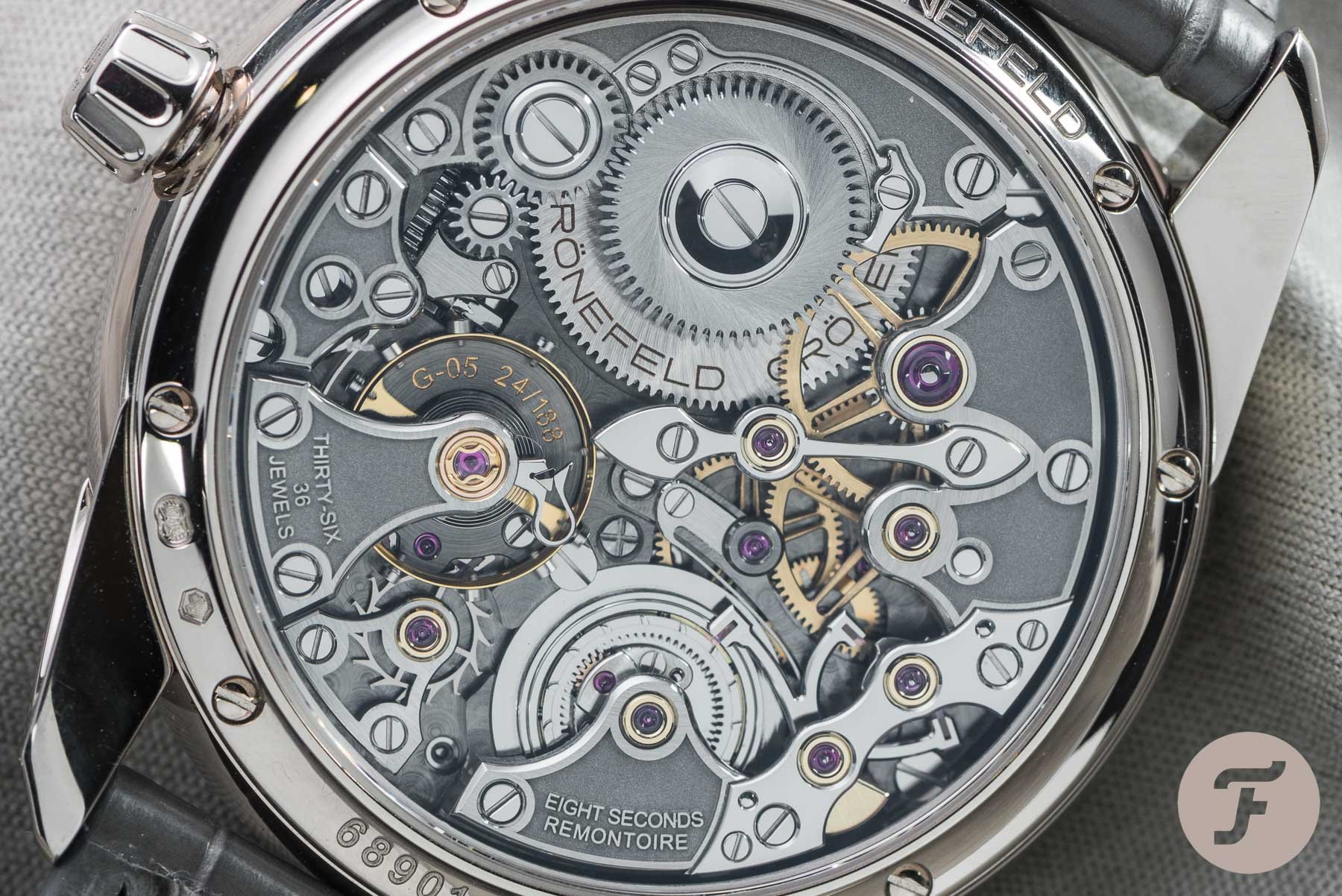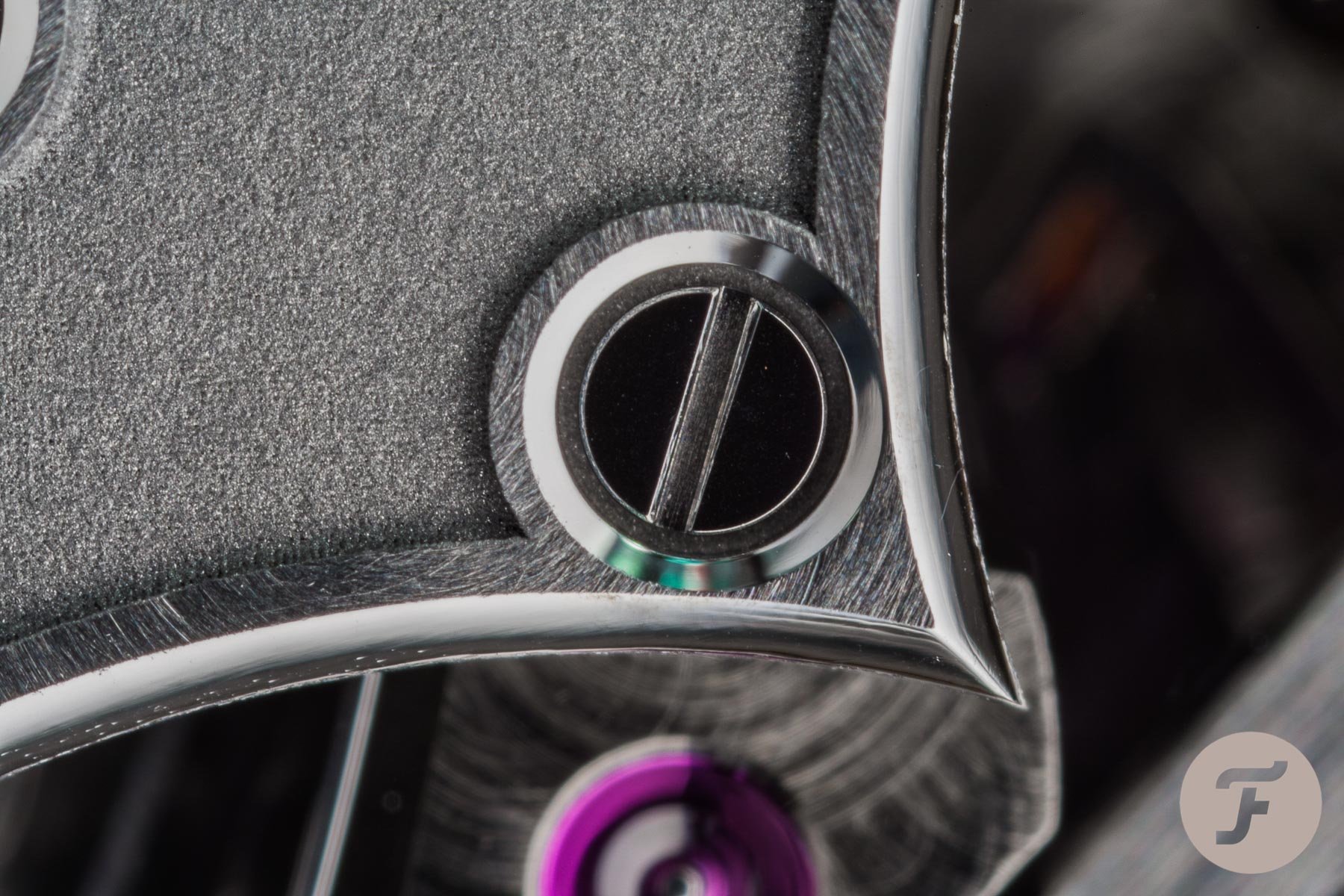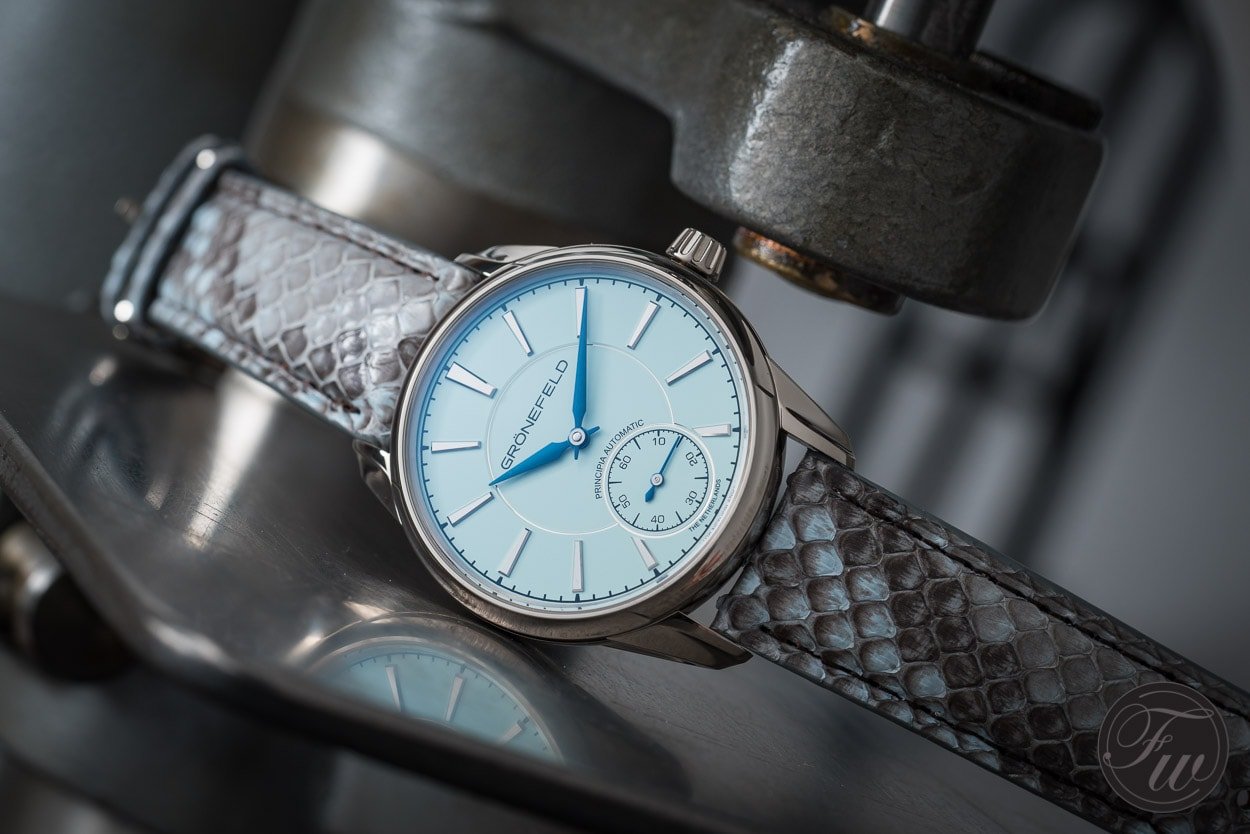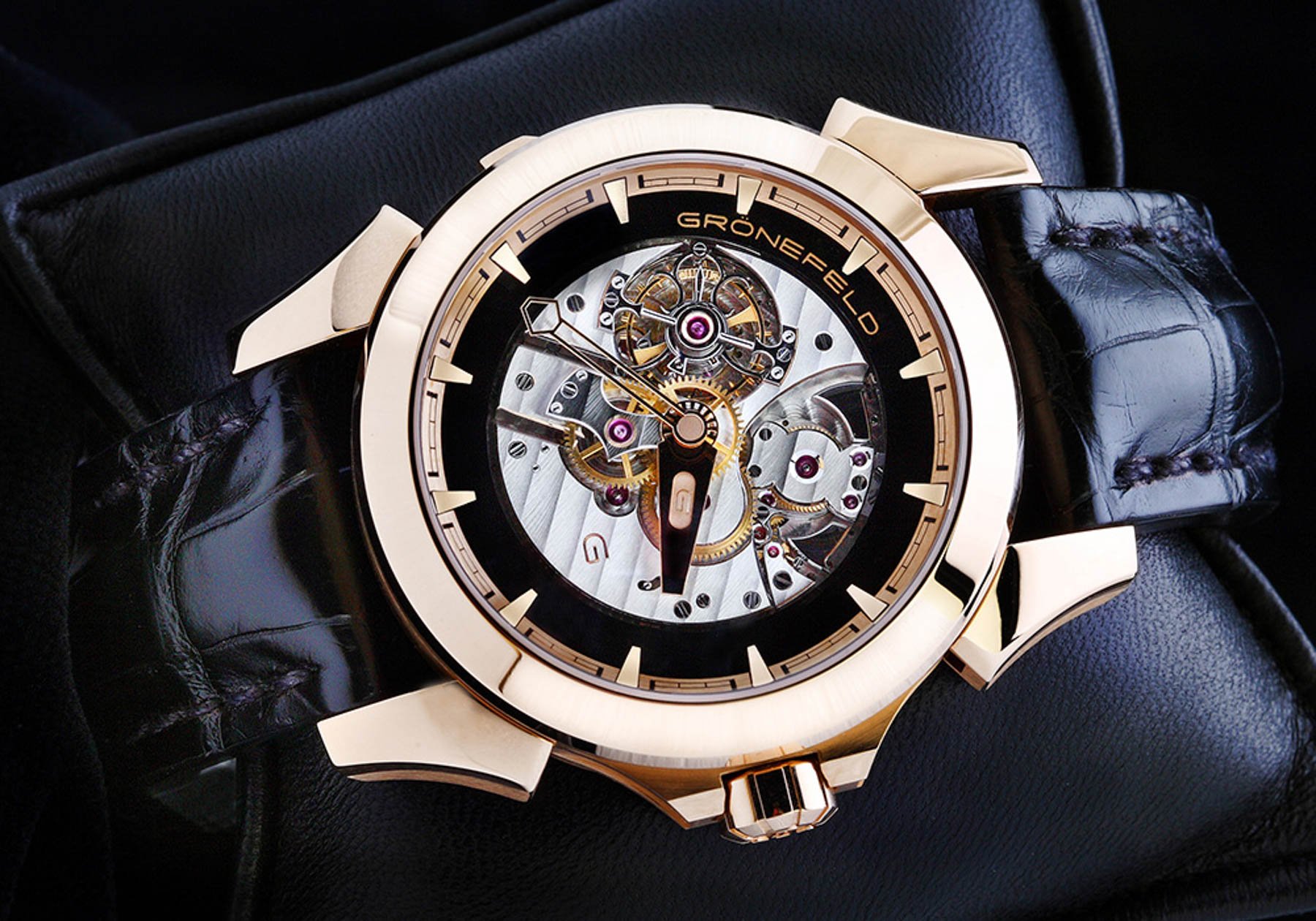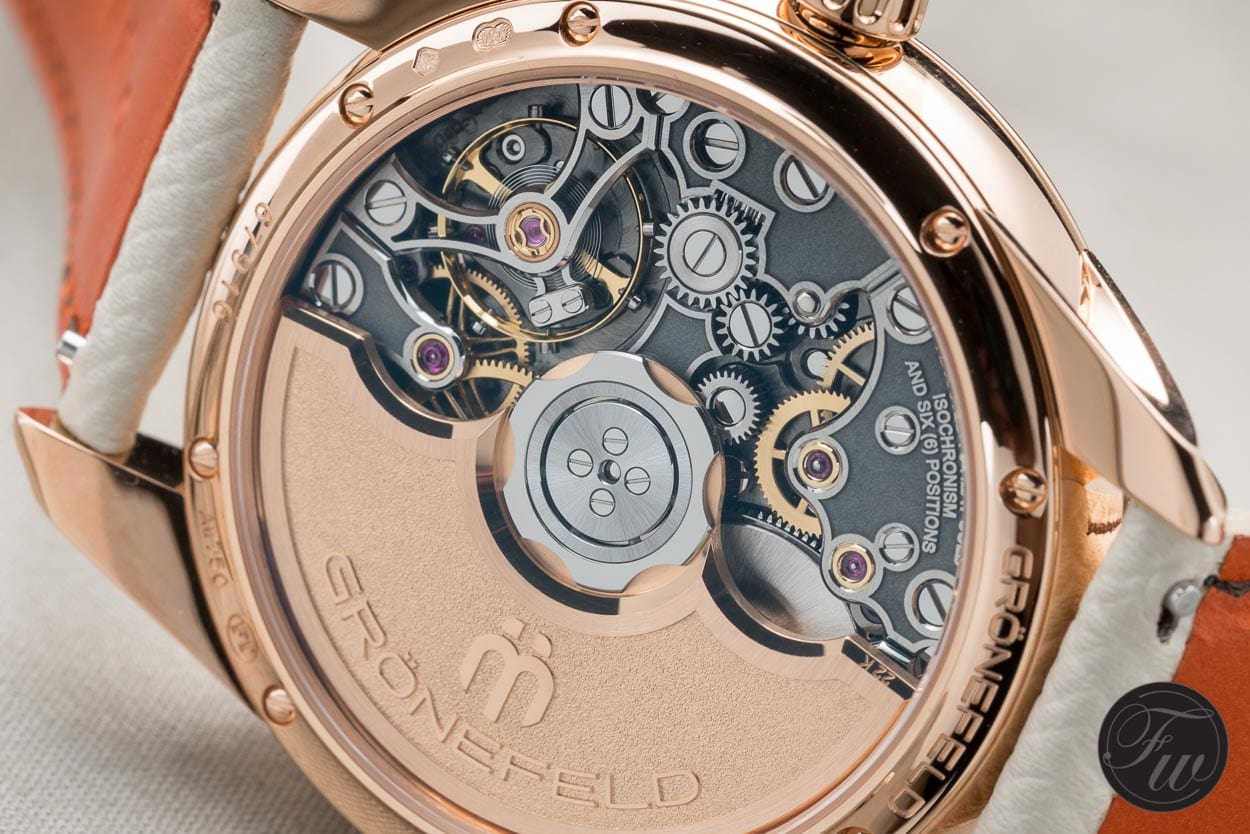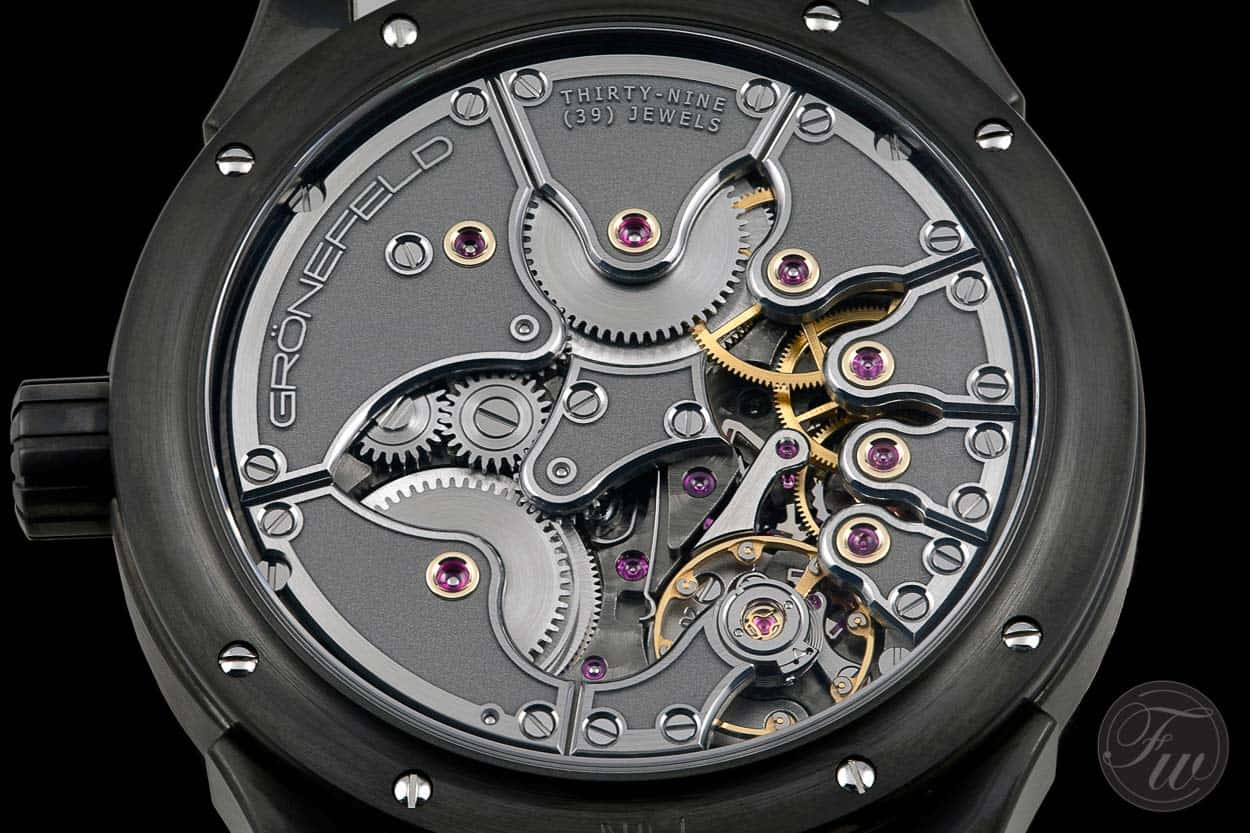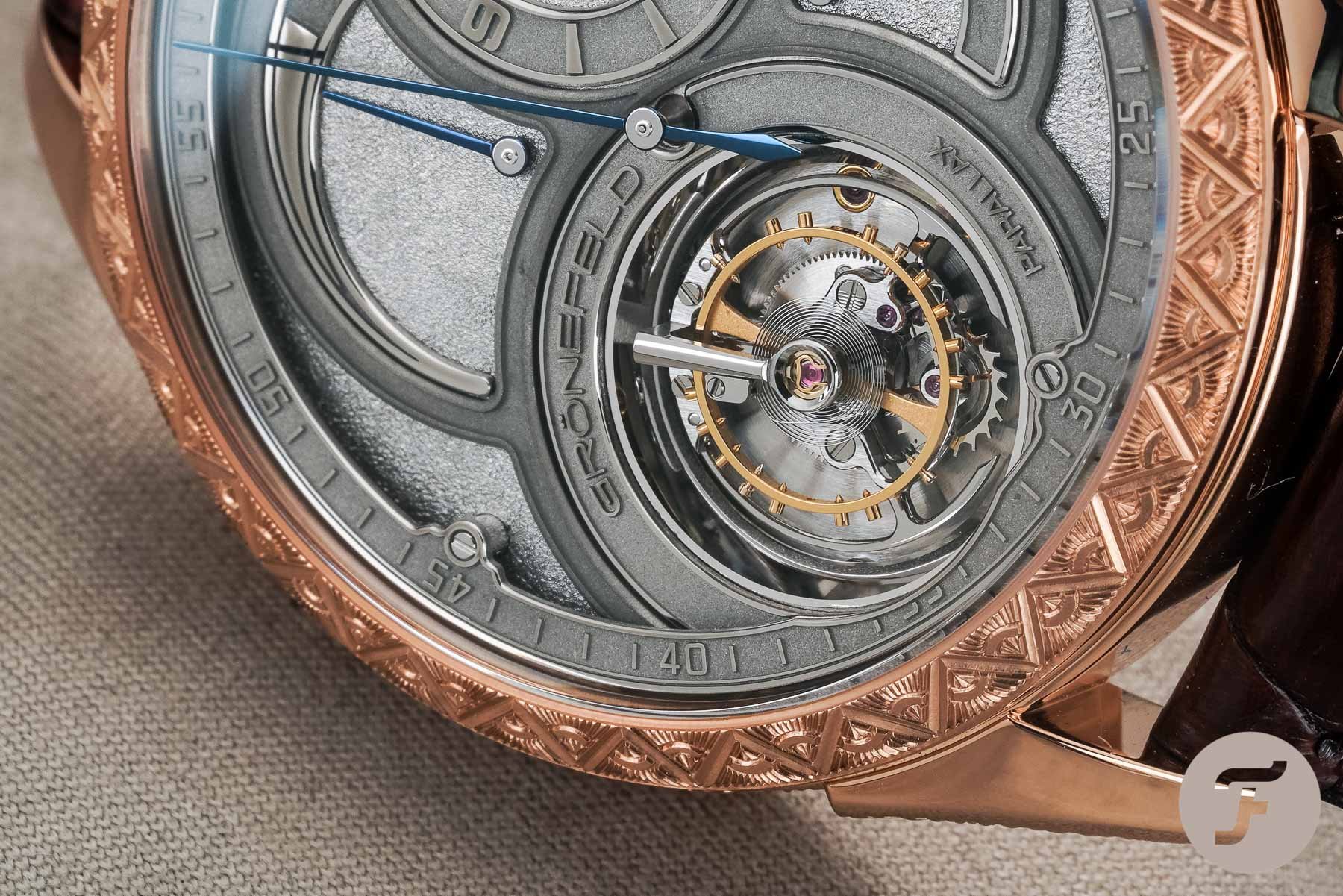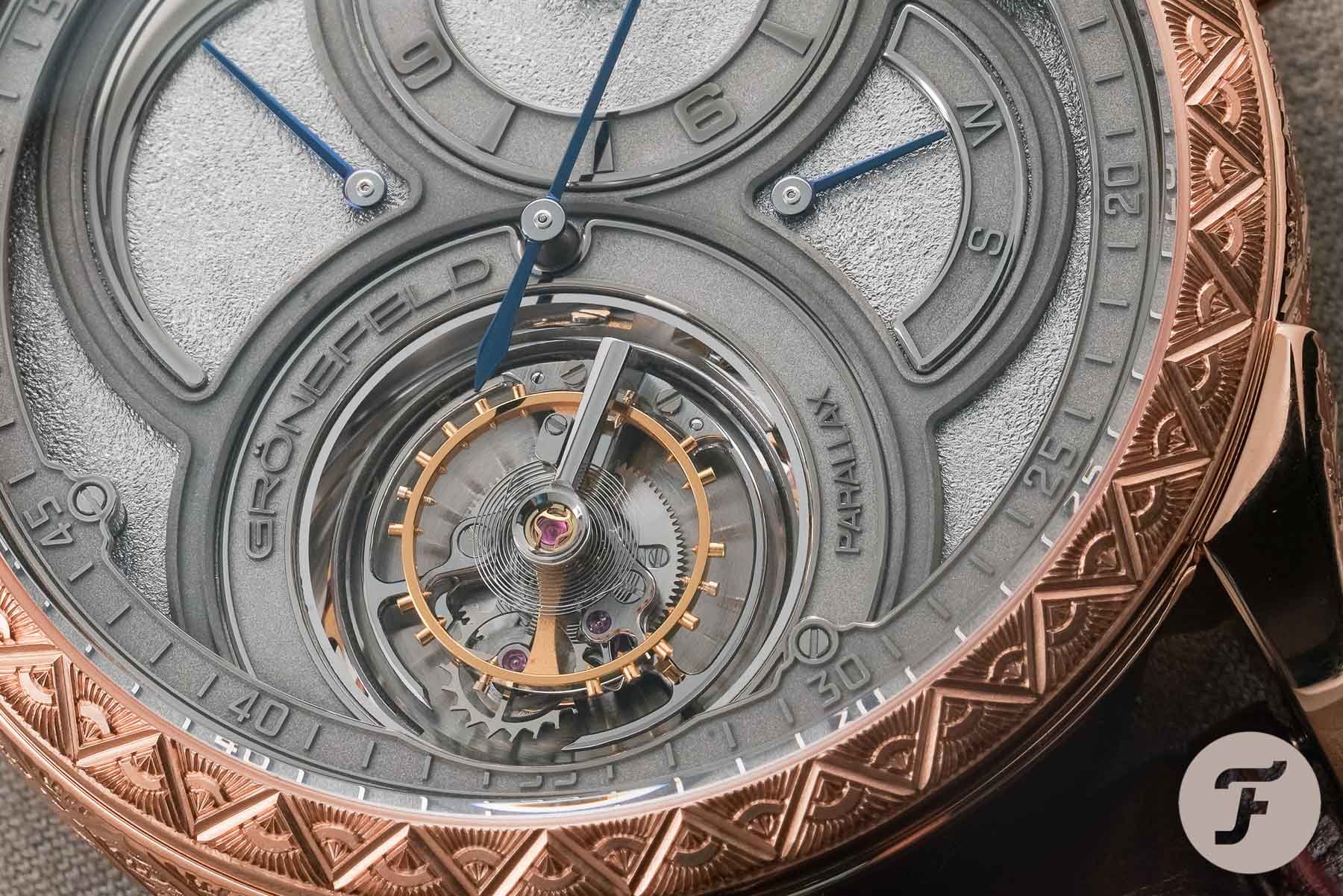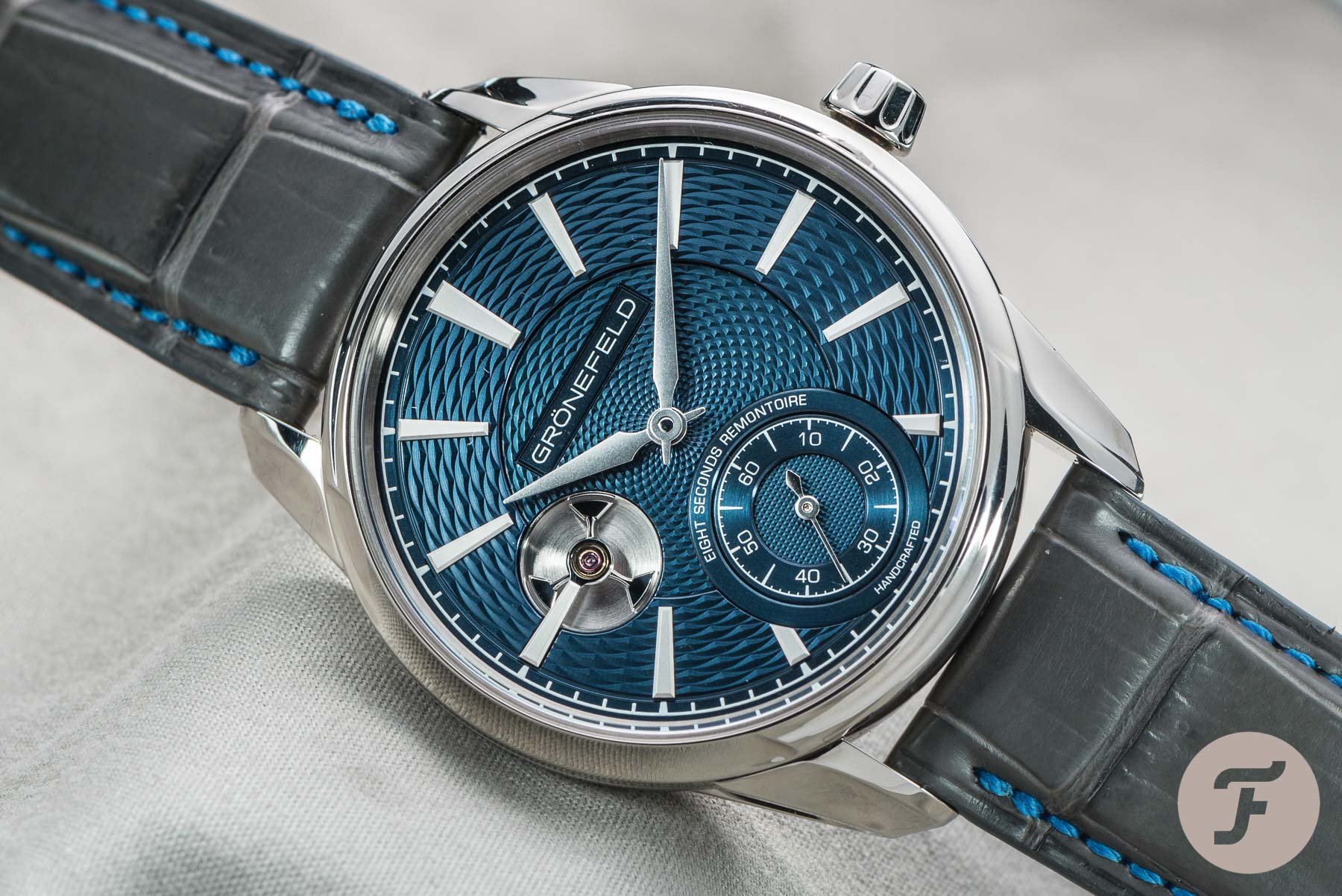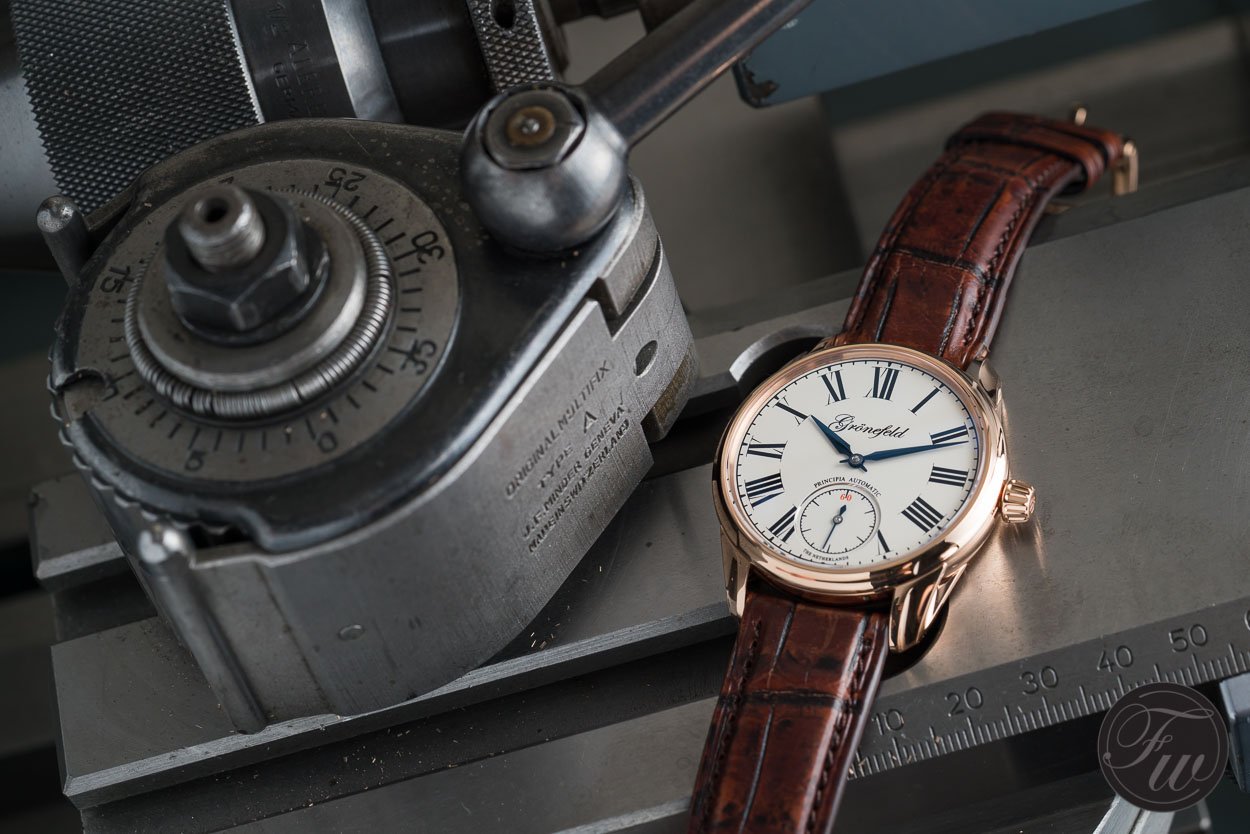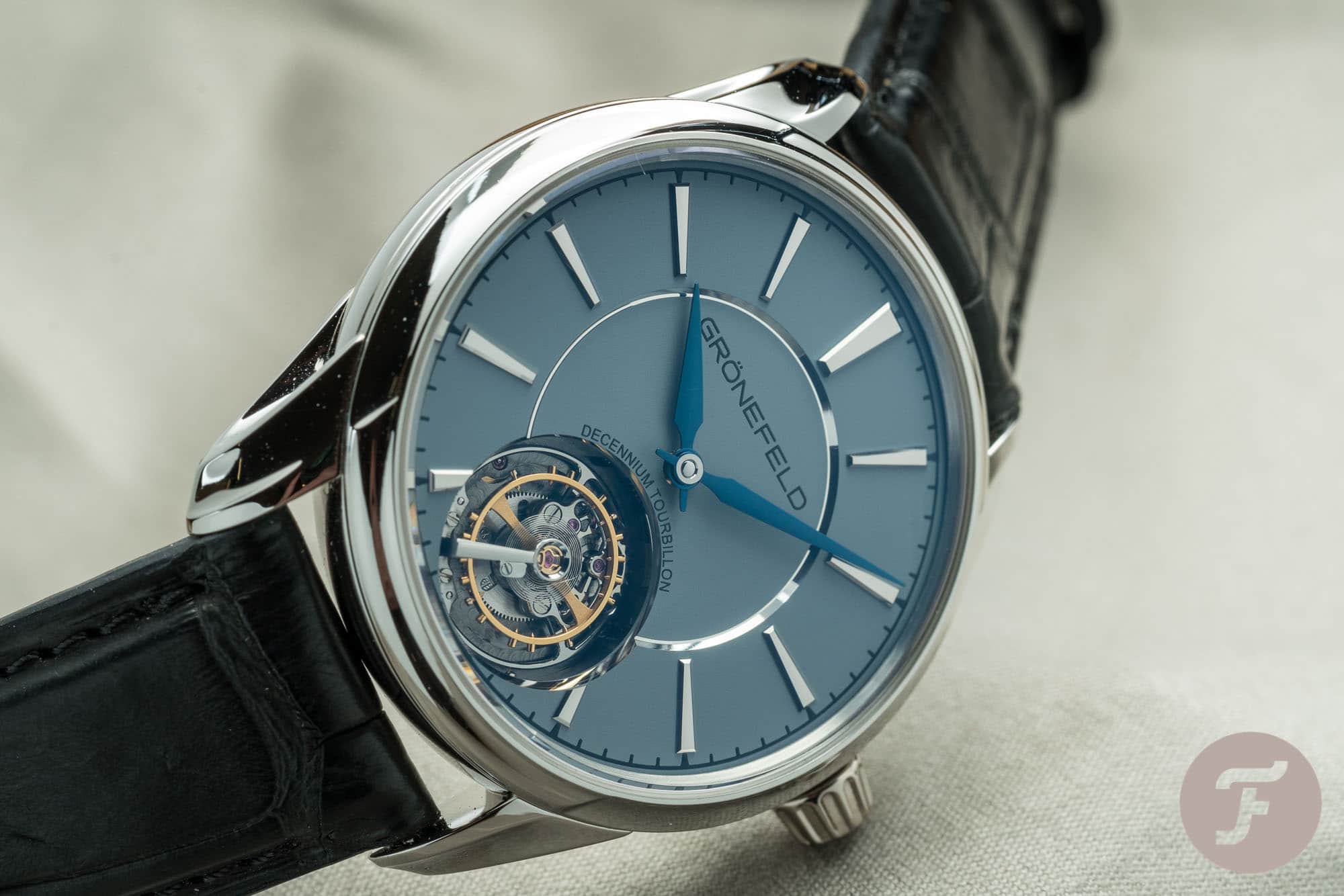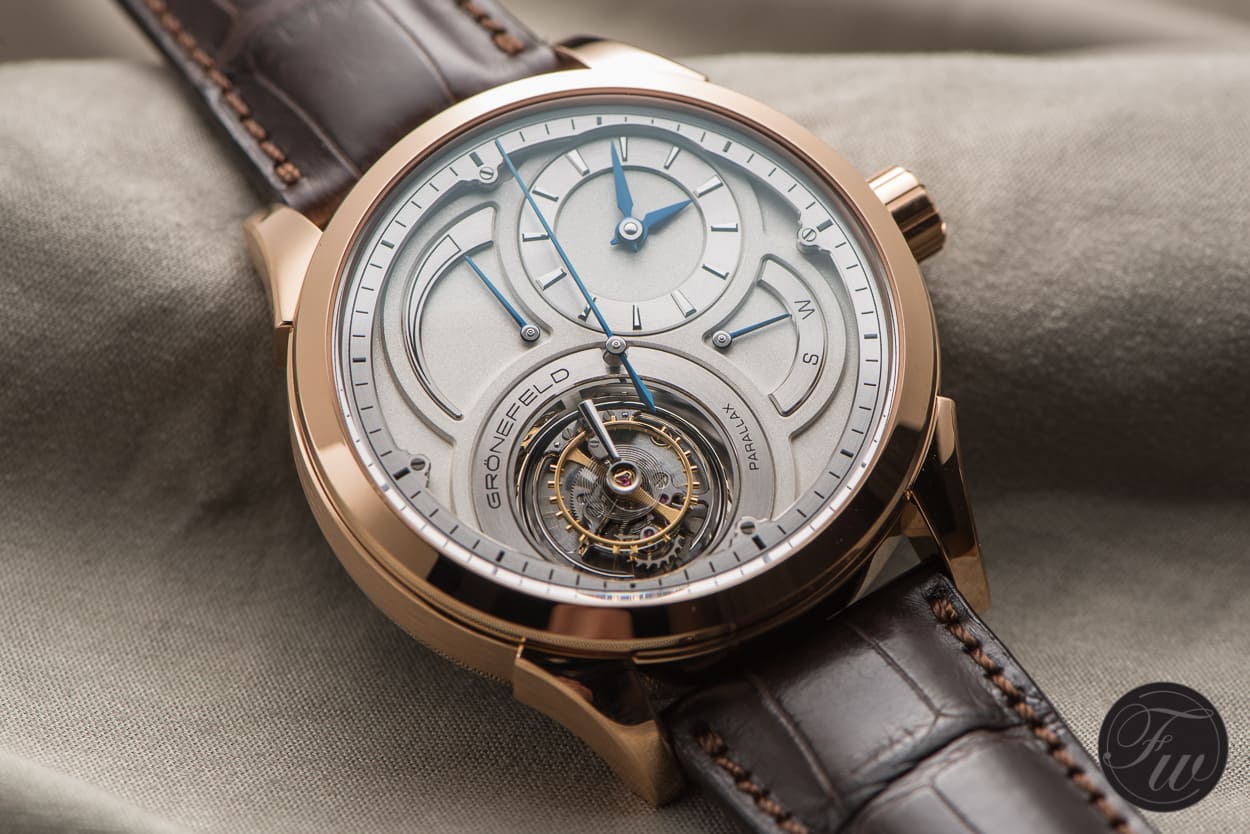A Brief History Of Time: Grönefeld’s Complete Brand History
For a watch brand that has only been available at market for 13 years, Grönefeld has already left a remarkable imprint on the world of independent timepieces. The Dutch “Horological Brothers,” Tim and Bart Grönefeld, not only carry on their family tradition as watchmakers, but also, having become true masters of their craft, produce only grail-level material in extremely small numbers. In this next installment of our “Brief History Of Time” series, we aim to enlighten those just learning about this exclusive manufacture as to why their watches are already, despite their relative youth in the worldwide market, considered nothing less than top level.
Bart and Tim Grönefeld credit their passion for horology to their grandfather, Gerhard “Johan” Grönefeld. He was born in 1896 in Oldenzaal, a small town in the eastern part of the Netherlands, close to the border with Germany from whence the Grönefeld family originally settled. He received his horological education from his uncle, and entered the watchmaking profession in 1912. Johan set up his watch workshop and jewelry boutique on Steenstraat, near the historic Saint Plechelmus basilica. Not only would his business there thrive, but he would also be placed in charge of maintaining the clock within the famous church’s tower.
Bart and Tim’s father, Johannes “Sjef” Grönefeld, was born in 1941, and followed in the footsteps of his father before him as a watchmaker and jeweler. When Johan passed away in 1974, Sjef assumed his rightful place at the bench in his father’s watchmaking workshop, while his wife managed the all of the boutique’s sales. Born in 1969 and 1972 respectively, Bart and Tim spent their boyhood poking around the family workshop, unable to resist the alluring rhythms of pallet levers and the ticking time machines that surrounded them. Before the age of six, Bart, fascinated by mechanics, was already dismantling alarm clocks, leaving his grandfather to reassemble and breathe life into them once more. Throughout their youth, the brothers developed a profound love for their family’s work, and even as children, vowed to one day carry the torch ignited by their grandfather in 1912.
Time to choose
Upon completing his compulsory education, Bart attended a technical school in his hometown of Oldenzaal, and was given the choice of which segment of the watch and jewelry industry he would like to work in. Presented with options to become a goldsmith, silversmith, clockmaker, or a watchmaker, Bart knew the last choice was the one for him, and went on to study in Rotterdam where he learned the basics of watch repair. After graduation at age 19, however, Bart felt that his knowledge and experience were lacking, and thus, he could not rightfully assume a place working alongside his father yet. He asked his father to help him find a job in the horological motherland of Switzerland in order to broaden his horizons, and it was there that the family found WOSTEP, the Watchmakers of Switzerland Training and Educational Program.
The school, located in Neuchâtel, was sponsored by top brands in the watch industry, and would provide exactly the education Bart so desired. Having trained at home in the Netherlands, Bart’s prior experience with movements consisted solely of Seiko, Citizen, and occasionally, ETA calibers. WOSTEP gave the knowledge-hungry Bart an insight into the highest levels of horology, and there, he found his absolute passion for working on the most complex movements. It was then that he realized his calling lie not in running the family’s shop, but in strictly that of a high-end watchmaker.
…Bart was hand-chosen for his talent, and thrown directly into the uppermost echelon of complication craftsmanship.
At the ripe young age of just 21, Bart graduated WOSTEP, and went to London to work as a watchmaker for the famous Asprey jewelers. After a year there, he decided to return to WOSTEP to further his understanding of complications. Thanks to the school’s industry connections, Bart was subsequently hired as a chronograph, minute repeater, and grand sonnerie specialist at Audemars Piguet’s haute horology complication supplier, Renaud et Papi. In stark contrast to the traditional path most young watchmakers take — starting at the bottom and climbing their way up the technical ladder — Bart was hand-chosen for his talent, and thrown directly into the uppermost echelon of complication craftsmanship.
“Tick Tock” and “Ding Dong”
Three years later, Tim, having completed his education at technical school in Oldenzaal and a specialty school for watchmakers in Schoonhoven, was also hired by Renaud et Papi as a specialist in tourbillons and movement regulation. Joining his brother at the top-level firm, Tim showed how skilled he had become at regulating movements, and was soon given the responsibility of training the other watchmakers there. He also became the go-to for escapement and tourbillon assembly, and with their complementary skill sets in both the regulation of time and the auditory expression of it, the brothers were fondly nicknamed “Tick Tock” and “Ding Dong”. Furthermore, during their time at Renaud et Papi, the brothers became extremely proficient at movement finishing, and it was these skills that would eventually become the cornerstones of their brand.
…the brothers were constantly surrounded by watchmaking friends and current-day industry greats…
Throughout their respective eight and six years in Switzerland, Bart and Tim’s lives were centered solely around their passion for watches. Even on the weekends, when not diligently working away within the Renaud et Papi workshop, the brothers were constantly surrounded by watchmaking friends and current-day industry greats such as Peter Speake-Marin, Stepan Sarpaneva, Kari Voutilainen, and Stephen Forsey. Barbecue parties marked by in-depth discussions on watch manufacturing and state-of-the-art finishing techniques were a common occurrence, and during this time, the brothers enjoyed learning about watches not only behind the bench, but also through the insight of their horological comrades. Finally, in 1998, the brothers decided it was time to head home to the Netherlands, taking their immense knowledge and skill with them, and opening their first workshop in their hometown of Oldenzaal.
Grönefeld GTM-06
In the first few years of running their shop, the brothers focused mainly on the servicing of timepieces from Breitling, IWC, and brands similarly positioned in the industry hierarchy. In addition, they did behind-the-scenes work for higher end brands, and continued doing exported finishing work for Renaud et Papi. During this time, however, they began to long for the good old days of working on the industry’s most challenging complications. They realized that in order to fully express their passion for fine horology, they would need to create their own manufacture. In so doing, they would be able to envision, create, and service only the type of watches that stimulated their passion to the fullest. Thus, in 2004, the brothers penned the first drawings for their debut design, and four years later, exploded onto the independent watchmaking scene with the release of the Grönefeld GTM-06.
…a one-minute tourbillon and a minute repeater!
The brand’s premier release was nothing if not an absolutely perfect reflection of Bart and Tim’s expertly-honed crafts. True to the brothers’ Tick Tock and Ding Dong monikers, the timepiece utitlized not merely a German silver, 385-component, 41-jewel, manually-wound movement, but one with a one-minute tourbillon and a minute repeater! The G-01 caliber’s tourbillon cage had a weight of just 0.42 grams, and its minute repeater mechanism, clearly visible through the watch’s sapphire case back, featured a cathedral gong that circled the interior of the case twice, providing the most resonance possible.
The purest tone
With a case diameter of 44mm, the watch was not only built to the larger preferences of (in the worlds of Bart himself) the “two tall Dutch guys,” but also purposely sized to allow the minute repeater’s gong to produce the purest tone. In addition, the interior of the bold lugs was specially channeled so as not to muffle the sound of the gong. The movement’s components, designed in-house and produced with the help of the brothers’ industry-leading partners, were finished and assembled completely by hand in the Grönefeld workshop, a practice that the brand still follows today. Only 20 pieces of the GTM-06 were produced in total, with 10 in rose gold and 10 in platinum. The watch was a hit among complication connoisseurs, and sold out rapidly.
Setbacks overcome
In 2009, the brand’s development faced setbacks due to the Great Recession. The Grönefelds acknowledged that in the new financial climate, consumers were becoming much more discerning. The demand for unique selling points and attention to detail was increasing at an undeniable pace. After seeing a pocket watch movement featuring steel bridges in a La Chaux-de-Fonds museum, Bart was inspired. As bridges of that movement had been fashioned from plain steel, they had oxidized over time. So brothers made the decision to improve on that construction, and fashion the bridges of all of their movements in stainless steel. Not only was this far-removed from the industry’s nearly-ubiquitous brass movement construction, it was also more unique than movements manufactured in gold or German silver. Although four times as difficult to finish, it would be a worthy medium for the Grönefeld brothers’ expression of dedication to their craft.
One hertz
The financial setbacks of the previous year did not stop the brothers from releasing their next model, the One Hertz, in 2010. The watch featured their in-house-designed G-02 caliber, and was remarkable in that it featured an industry-first innovation of independent dead-beat seconds. What this means is that while the timekeeping of hours and minutes was done at three hertz (21,600 vibrations per hour), the jumping seconds were driven by a completely independent gear train, operating at the model’s namesake frequency of one hertz (7,200 vibrations per hour). The complication was also powered by an entirely separate mainspring barrel, and the mechanically-ticking second hand was put on proud display in a roughly three-quarter size subdial. Separating the dead seconds complication from the main timekeeping function in this way had never been done before on a serially-produced watch, but merely revolutionizing this traditional complication was not enough.
In early 2012, the Grönefeld One Hertz was voted the “2011 Watch of the Year”…
The movement, a manually-wound caliber, also featured a power reserve indicator and a very unique wind/set indicator on the dial. At a quick glance, the wearer could tell which position the crown was in, an indicator that, while some may call superfluous, could be useful when crown positions are not as clearly pronounced as on a sports or dive watch. The case of the One Hertz, at 43mm, was available not only in haute-horology-standard gold, but also stainless steel. Since its release, the Grönefeld brothers have always offered a steel option for all their models, reaffirming both the wearability of the material and their love for it. In early 2012, the Grönefeld One Hertz was voted the “2011 Watch of the Year” by the community at TimeZone.com, beating out legendary haute horology contenders Patek Philippe, Vacheron Constantin, and A. Lange & Söhne.
Parralax Tourbillon
In 2014, the brothers released their next creation, the Parallax Tourbillon. Released in very limited numbers in 43mm rose gold, platinum, and stainless steel cases, the Parallax Tourbillon featured the in-house-designed caliber G-03. The dial, with off-center hours and minutes, power reserve, and wind/set indicators, was similar to the One Hertz. This piece, however, was all about making the tourbillon as accurate as it could be.
To do so, the caliber employed a one-minute flying tourbillon with a central seconds hand. A central seconds hand is not very common for a one-minute tourbillon, as movements of this type generally indicate seconds through the revolution of the tourbillon cage itself or a hand mounted on top of it. Furthermore, the center seconds hand was also hackable, allowing the revolution of the tourbillon to be stopped for more accurate time setting. This is an extremely rare feature for a tourbillon.
And what about the “Parallax” name? For those unfamiliar, parallax is an optical illusion by which an object’s position appears to change due to the viewer’s physical position. With watches, this can occur when there is a large space between the hands and dial or chapter ring, causing the wearer to misread the time. The Parallax Tourbillon therefore featured a raised chapter ring, eliminating the gap between it and the tourbillon’s unconventional center seconds hands.
This, ironically, eliminated parallax all together, and allowed precise reading from any angle. Quite possibly Tim’s answer to the deficiencies he had witnessed while mastering the tourbillon, the watch was, again, a fitting representation of Grönefeld’s best skill sets. The consideration taken in developing the Parallax Tourbillon was not lost on the watch-loving world, and theyear of its release, it was awarded the prize for best tourbillon at the presitigious Grand Prix d’Horlogerie de Genève, or GPHG.
1941 Remontoire Constant Force
In 2016, Bart and Tim Grönefeld released their next masterpiece, the 1941 Remontoire Constant Force. With the desire to appeal to a wider range of wrist sizes, the piece featured a smaller case diameter of 39.5mm, dubbed “1941” for the year of their father’s birth. The rementoire mechanism, seen revolving every eight seconds at the nine-o’clock position on the beautiful sterling silver dial, ensured that a constant amount of torque was delivered from the mainspring to the balance wheel for the entire duration of the manually-wound movement’s power reserve. As children, Bart and Tim would often see this mechanism in action on a large scale within the clock towers their grandfather and father were tasked with maintaining. Heeding warnings not to get too close for risk of getting whacked in the head by the revolving spring, the mechanism instilled a sense of fear in the boys in their younger years.
…some of the best component producers in the industry…
As adults, however, the Grönefeld brothers faced this emotion head-on, turning it into an evocative piece of mechanical art that would go on to win yet another award at the GPHG for best men’s watch of 2016. In addition to the standard versions of this model, Grönefeld also chose to provide a bespoke dial service. By allowing clients to choose from a range of guilloché and enamel dials suited to their exact color specifications, the additional personalized service made an already highly-exclusive timepiece a true one of a kind. As previously stated, Grönefeld has partnered with some of the best component producers in the industry to bring their own visions and those of their clients to life. For guilloché dials, the brothers proudly teamed up with the great Kari Voutilainen to deliver the ultimate in quality.
Principia
In 2017, the brothers exhibited their work for the first time at the Salon International de la Haute Horlogerie, or SIHH. In 2018, they did so again, and also at Baselworld. Later that year, the brand’s next offering hit the market in the shape of the 1941 Principia. Utilizing the same gracefully designed case as the Remontoire Constant Force, the Principia marked an important development for the brothers as their first automatic caliber. The watch would also serve as the brand’s most entry-level offering, though with a starting price of nearly 30,000 Euros, “entry-level” is certainly a relative term. Reflective in its price point was the more simple approach to the movement’s function, with just central hour and minute hands and a small seconds indicator at the six-o’clock position.
Available in white gold, rose gold, and of course, stainless steel, the Principia offered an array of eye-catching sterling silver dials, and for the first time in the line, a lacquer dial option with Roman numerals and the original Grönefeld cursive logo used by their grandfather in 1912. While the function of the watch was more suited to daily wear, the aesthetics of the automatic caliber inside remained equally as stunning as its predecessors. With stainless steel bridges resembling the “bell gables” seen in the architecture of old Dutch homes and jewels surrounded by gold chatons, the look was beautifully contrasted with a solid 22 karat rose gold rotor, complete with frosted finish and beveled edges.
Decennium Tourbillon
Following the 2018 release of their first automatic movement, the brothers took the caliber to the next level with the release of 2019’s Decennium Tourbillon. Created to celebrate the tenth anniversary of the brand, the Decennium’s platinum 1941 case housed the brand’s very first automatic tourbillon caliber. Fittingly, the watch was limited to just ten pieces, and as with all Grönefeld pieces, was assembled and finished completely by hand.
This commitment to hand-finishing is something the Grönefeld brothers do not take lightly. Since the brand’s inception, all movements that have left their workshop have been shown the same level of care and attention in this regard. Featuring frosted, satin, and perlage finishes along with gleaming anglage and black-polished screws, even the simplest of calibers in the line-up requires at least four full weeks of dedicated work to finish and another week to assemble. With a small number of staff, Grönefeld has historically been able to produce only 50 to 70 watches per year. In 2021, however, due to rising popularity and demand, the brothers increased their staff to a “whopping” 15 members, and relocated to a bigger workshop with the goal of producing more incredible timepieces for the most appreciative of horological connoisseurs.
With new models currently in the works, and enthusiasm and fervor for the small brand’s creations ever on the rise within our community, the next few years will certainly be marked by growth and prosperity for the Horological Brothers. We here at Fratello certainly look forward to bringing you all the latest news from Grönefeld, along with hands-on reviews and exclusive insight. In the meantime, if you’d like to check out any our past reviews on many of the pieces mentioned in this history, you can find them here.

